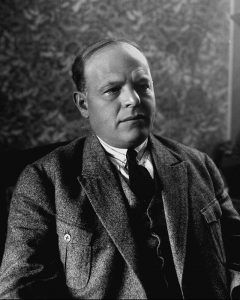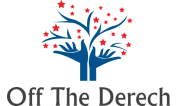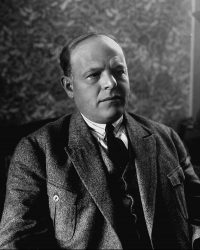 Although not all of us learned about this during our education at Bais Yaakov or yeshiva, we are not the first generations to think and write about the experience of going off the derech. Of course dissent has always been a part of Jewish tradition, from Hillel and Shammai down to Spinoza. But the OTDers of the nineteenth and early twentieth-century Europe are particularly interesting for us, because of their reflections on Jewish life and thought and because of the role they played in many of the events and movements which have shaped the world outside of the Jewish community as well. Those of us who have exchanged the pursuit of mitzvos, Moshiach and olam haba for the pursuit of justice for all people can look back to OTDers like anarchist and feminist Emma Goldman, Ludwig (Leyzer) Zamenhof who invented Esperanto in an attempt to eliminate the language barriers between people, or the Bundists and creators of modern Yiddish literature. I hope to devote future blog posts to them. Today’s post is about OTD literature, and specifically Hebrew literature, because it will show how easily we can connect to the past.
Although not all of us learned about this during our education at Bais Yaakov or yeshiva, we are not the first generations to think and write about the experience of going off the derech. Of course dissent has always been a part of Jewish tradition, from Hillel and Shammai down to Spinoza. But the OTDers of the nineteenth and early twentieth-century Europe are particularly interesting for us, because of their reflections on Jewish life and thought and because of the role they played in many of the events and movements which have shaped the world outside of the Jewish community as well. Those of us who have exchanged the pursuit of mitzvos, Moshiach and olam haba for the pursuit of justice for all people can look back to OTDers like anarchist and feminist Emma Goldman, Ludwig (Leyzer) Zamenhof who invented Esperanto in an attempt to eliminate the language barriers between people, or the Bundists and creators of modern Yiddish literature. I hope to devote future blog posts to them. Today’s post is about OTD literature, and specifically Hebrew literature, because it will show how easily we can connect to the past.
Not all OTDers of this period were internationalist in their beliefs. Some, as you may know, were primarily concerned with Jews. Not all of these became Zionists in the sense that the term is used today, and not all of the Jewish movements who identified as Zionist planned to emigrate to Palestine or anywhere else. And besides this confusion, Zionism itself emerged in large part as a cultural movement, not a political one. This cultural movement generally rejected Yiddish in favor of a revival of Hebrew literature even though Hebrew was not a spoken language. The most extreme example of this may have been Sefer haaggadah (1908), a Hebrew retelling of lore from Rabbinic literature. This would allow people to access the stories of the Rabbis without reading through legal discussions of the Talmud or knowing Jewish tradition in depth. It was promptly translated into Russian as well (1910), broadening the Jewish audience for the book to include those who did not know Hebrew. (Further reading, on the reception of the book by the Orthodox community: http://www.haaretz.com/israel-news/haim-nahman-vs-the-haredim-1.375918 )
One of the composers/editors of this anthology, Chayim Nachman Bialik, is considered to be the Hebrew national poet. He is mostly known for his Zionist poetry, which is taught in Israeli schools and has been repeatedly set to music. But Bialik, a dropout of the Volozhin yeshiva, was also a poet of the OTD experience whose OTD style and content (not to mention its Ashkenazi accent) are lost on most Israeli readers of his work. Readers of this website might particularly enjoy “Hamasmid,” which is available along with other poems of his on the Project Ben Yehudah website http://benyehuda.org/bialik/matmid.html and for which I will provide a translated excerpt here:
“Oi, oi, amar Raba!” Can it be
While life around thee with a thousand voices
Calls in a thunder chorus, can it be
That not a murmur to thy heart has passed,
That in self-conquest thou art blind and deaf?
“Oi, oi, amar Raba!” Can it be
That thine own soul, which from thy parching throat
Calls in a desperate and dying voice,
Must call in vain and with its cry be stifled?
Must every blossom of desire, of joy,
That longs to spread its leaves, imprisoned stay,
And in the darkness die before it buds?
(From “The Talmud-Student.” Tr. Maurice Samuel. In Selected Poems of Hayyim Nahman Bialik. Ed. Israel Efros. New York: Bloch Publishing Company, 1948. 42.)


Leave a Reply